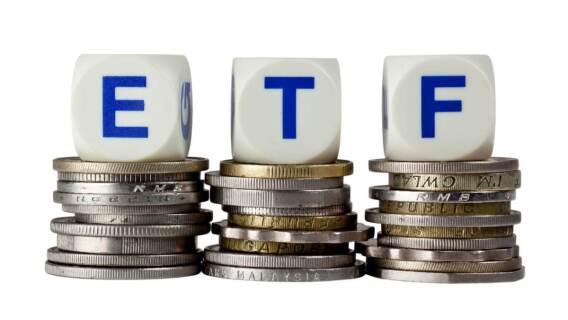You could say any number of things about the year 2021, and one of them is, “The year of the SPAC.”
The number of special-purpose acquisition IPOs totaled 613 last year, up from 248 in 2020.
If that’s a sliver of the market that interests you, you don’t have to purchase the individual stocks. Instead, you can invest through a SPAC ETF (exchange-traded fund).
A SPAC (special purpose acquisition company) is a blank-check company, established specifically to raise money through an IPO via a merger or acquisition with another company with high growth potential. The SPAC itself is publicly traded, but the real potential lies in the merger.
For example, MP Materials (MP) came public in June 2020 through a merger with SPAC Fortress Value Acquisition Corp. Over the past year, the rare earth miner returned 41.14%.
[text_ad]
That return sounds good, particularly when compared to a higher profile name like DraftKings (DKNG), which went public via a SPAC merger in April 2020, and is down 57.77% on a one-year basis.
But it’s highly unlikely that a relatively unknown company like MP Materials would be most investors’ pick, despite outstanding sales and earnings growth.
That’s where an ETF comes in. In recent years, the number of specialty or theme ETFs has exploded. Some of that growth is due to asset management companies catering to current consumer tastes – the consumers in this case being fund investors.
Consistent with the trend toward thematic ETFs, there are currently at least three SPAC ETFs available to investors.
The obvious advantage to a SPAC ETF (or any ETF, really) is that you can spread the risk while getting access to companies you would be unlikely to own otherwise. Of the 613 SPACs that went public last year, it stands to reason that not all will be leaders, at least not at the same time. In addition, any upside potential is due to the company the SPAC opts to merge with.
In any event, a SPAC ETF gives you broad exposure to this asset class, while mitigating downside risk.
One risk inherent to SPACs: These shell companies are typically required to complete a transaction within two years. If that doesn’t happen, the SPAC is generally forced to liquidate. If that happens, the share price of a publicly traded SPAC will plummet.
However, that goes to the inherent diversification within an ETF. If several are forced to liquidate (which is very likely), then other, more successful companies may offset those losses with gains.
Here are three SPAC ETFs that investors may currently choose from:
SPAC ETF #1: Defiance Next Gen SPAC Derived ETF (SPAK)
This SPAC ETF launched in September 2020. It’s passively managed, tracking the Indxx SPAC & NextGen IPO Index, which offers exposure to the broad IPO market.
The low expense ratio of 0.45% is possible because of the passive management style. It’s the least expensive of the currently available SPAC ETFs.
This ETF currently holds about 373 securities, weighing post-SPAC transactions at 60%, with early-stage blank-check companies at 40% of portfolio weighting.
Top holdings include Lucid Group (LCID), Pershing Square Tontine Holdings (PSTH) and DraftKings.
Its 2021 return was -24.72%. In January it’s down 7.86%.
SPAC ETF #2: SPAC and New Issue ETF (SPCX)
This is the first actively managed SPAC ETF. It was launched in December 2020 by Tuttle Capital Management.
According to fund literature, “The fund will invest at least 80% of its net assets in units and shares of SPACs that have a minimum capitalization of $100 million and companies that completed an initial public offering (“IPO”) within the last two years.”
Because it’s actively managed, this has a higher expense ratio than you’ll find in an index ETF. In this case, the expense ratio is 0.95%.
Top holdings include Accelerate Acquisition Corp. (AAQC), Apollo Strategic Growth Capital (APSG) and Global Consumer Acquisition Corp. (GACQ).
This fund returned just 10.06% in 2021, below the broad market return. So far this month, it’s down 0.68%.
SPAC ETF #3: Morgan Creek Exos SPAC Originated ETF (SPXZ)
This is both a smaller and more expensive ETF, relative to the other two. It’s co-managed by Exos Asset Management and Morgan Creek Capital Management.
The fund currently has only $10.4 million under management, down 16.90% in the past three months, and down significantly from its February 2021 peak. This actively managed ETF’s theme is “companies of the future,” which is similar in tone to that of the ARK family of ETFs.
Also similar: The concentration in industries with future potential often means holding companies with a lack of strong revenue and earnings growth now. In the broad market, we’ve seen investors sour on these companies in recent months, despite the promise of gains in the future.
This ETF holds approximately one-third of its portfolio in pre-combination SPACs, and approximately two-thirds in post-combination SPACs.
This month, it’s down 9.5%.
Want to know what other ETFs I like today? You can become an early subscriber to my Cabot ETF Strategist by clicking here. It’s an investment advisory devoted exclusively to exchange-traded funds, and it launches later this month.
Join me and let’s make a lot of money in ETFs together!
Have you invested in any SPACs in the last year? Tell us about them in the comments below.
[author_ad]

